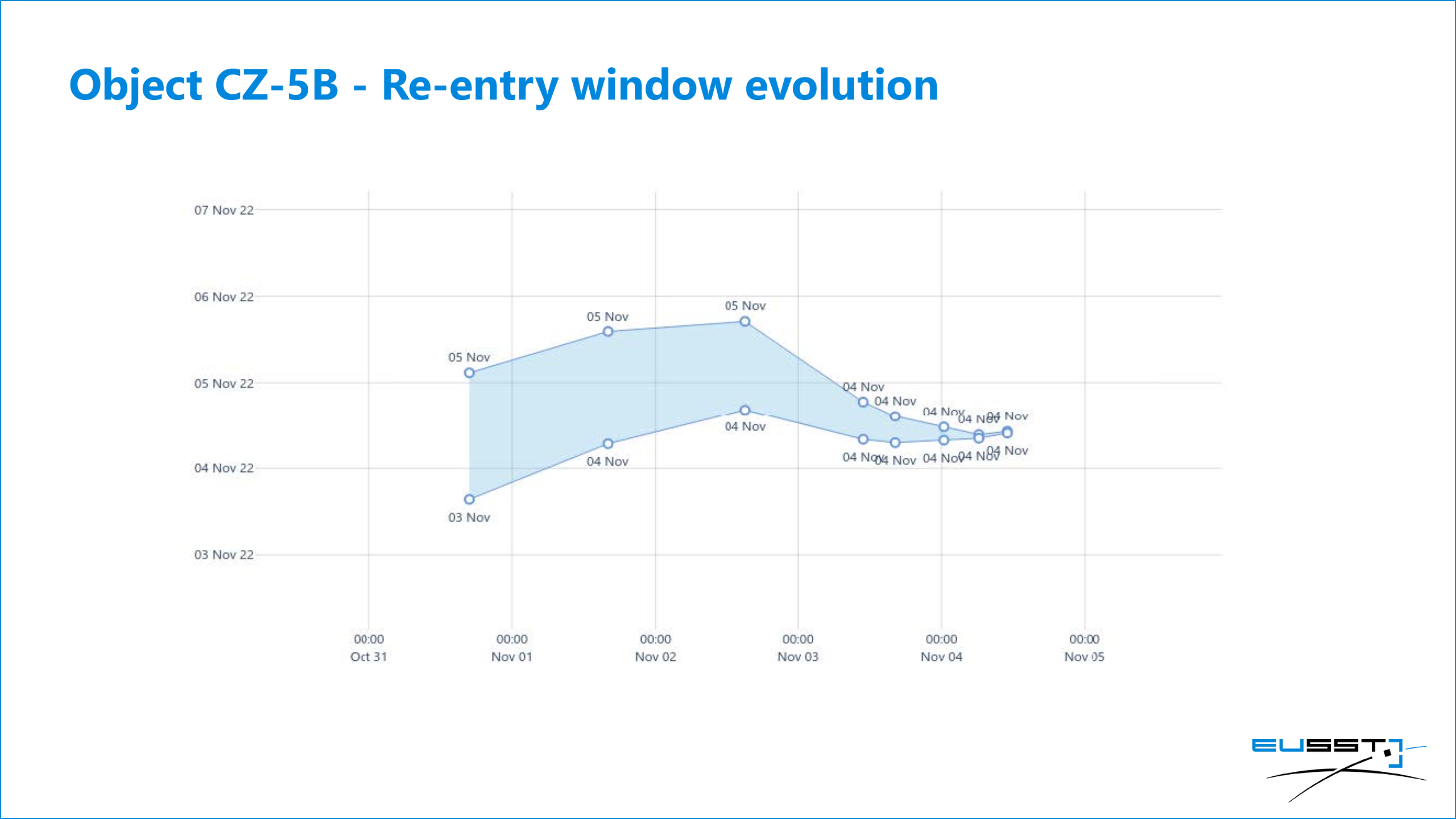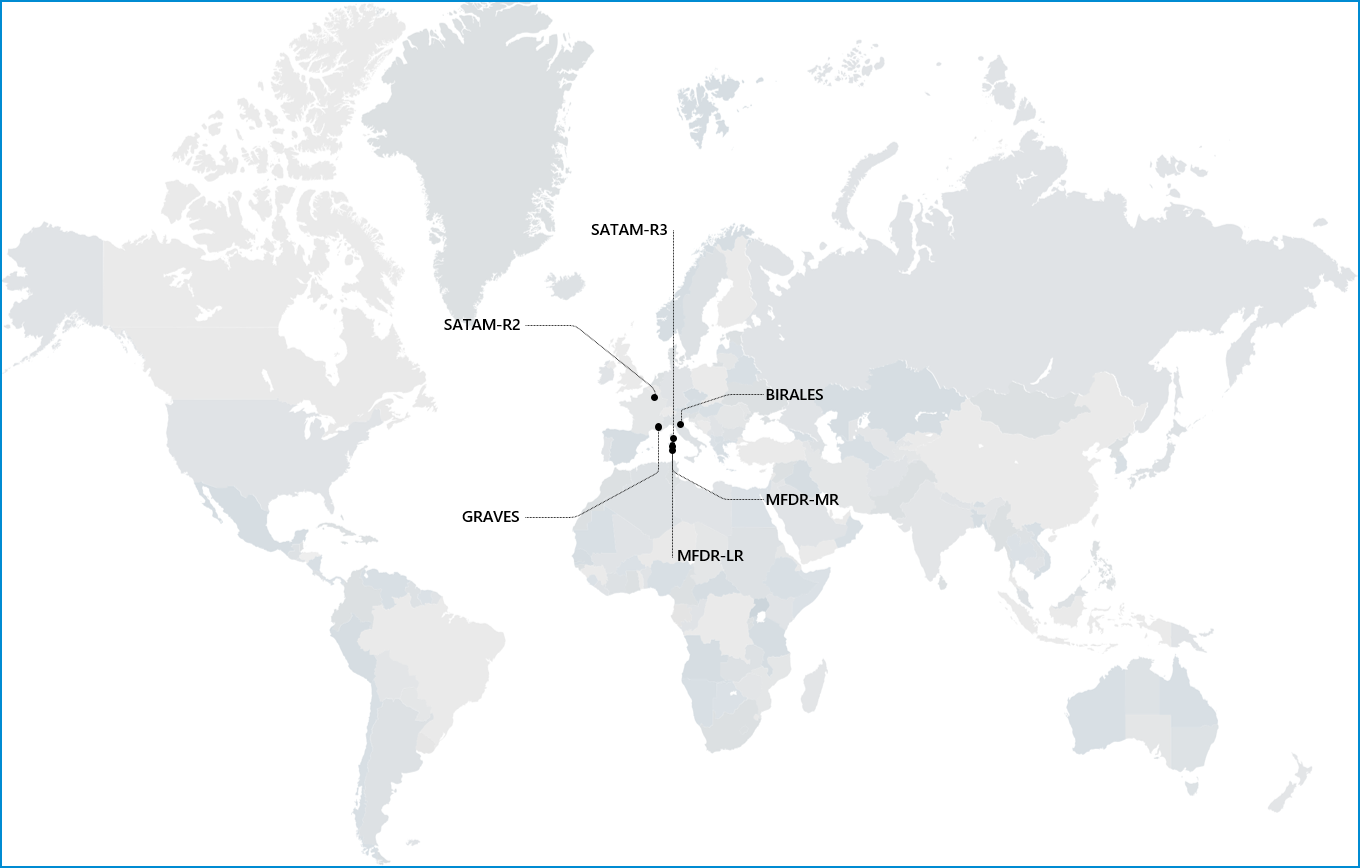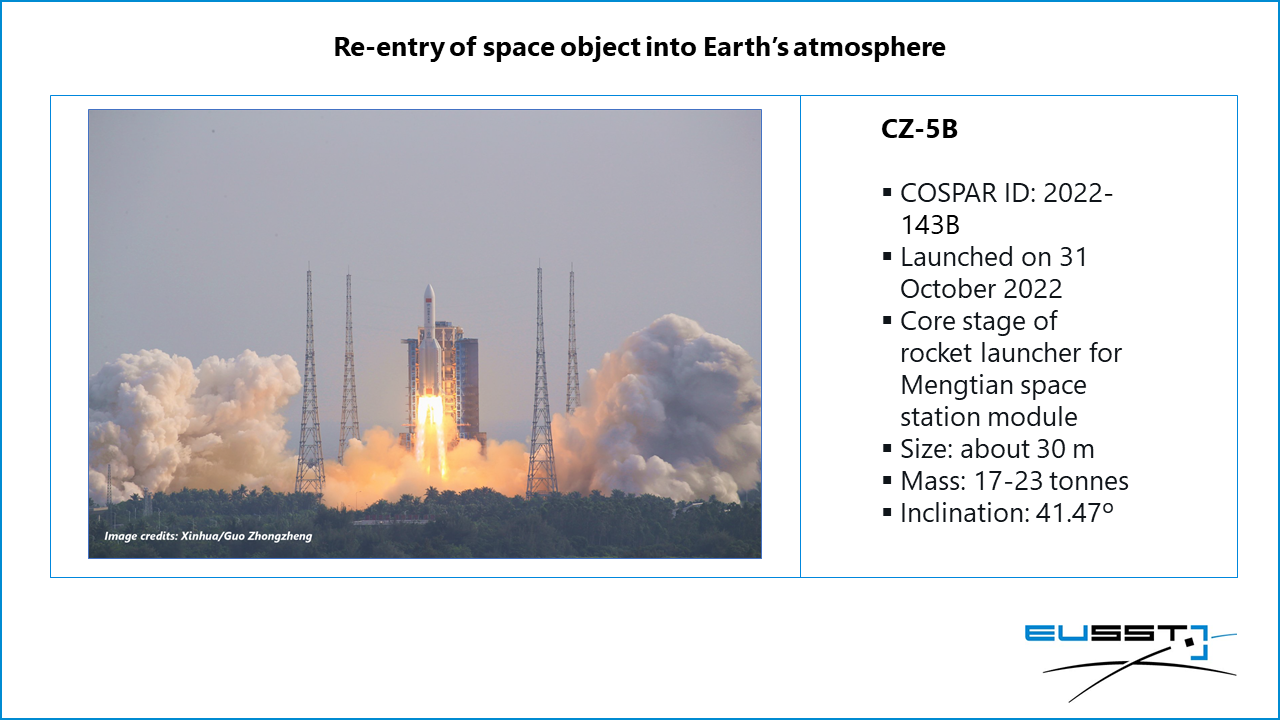
The EU Space Surveillance and Tracking (EU SST) Operations Centres has monitored the re-entry into Earth’s atmosphere of large space object CZ-5B (2022-143B), the core stage of the rocket that launched Mengtian – the third module of the Chinese large modular space station – on 31 October 2022. The EU SST network of sensors observed the object closely, and its radars narrowed down its re-entry window to 4 November.
Latest update: 2022-11-04 13:00 UTC+1
Based on EU SST analysis and external information, EU SST confirms that object CZ-5B decayed on 2022-11-04 10:01 UTC ±15 minutes.
The below figure shows the Velocity Time Intensity (VTI) of the object during the pass observed on 31 October by the MFDR radar, with a tumbling speed of 5 seconds per revolution, which suggested a fair rotation. Over the course of the event the object showed significant changes in the tumbling rate, which influenced the predicted re-entry date.

Velocity Time Intensity (VTI) of the object detected by MFDR radar during the pass on 31 October, with a tumbling speed of 5 seconds per revolution.
Due to its inclination (41.47 degrees), the object could re-enter within the latitude band ±41.47 deg. These predictions however came with uncertainties as the object was uncontrolled, and a better estimation was only possible a few hours before the actual re-entry.
The below figure shows the ground track for the last estimated re-entry window 2022-11-04 10:01:04 UTC ±15 minutes.

Map of the whole ground track.
Green lines: ground track during the re-entry window. Red lines: part of ground track over EU Member States. Marker: centre of the predicted re-entry window.
Note: the possible re-entry locations lie anywhere along the green lines. The re-entry point was considered to be at an altitude of 80 km.
Object CZ-5B had a mass ranging from 17 to 23 tonnes and a size of about 30 m, which made it one of the largest pieces of debris re-entering in the near past and therefore it deserved careful monitoring. EU SST contributing sensors observed the object and Operations Centres performed analyses to produce the best possible estimation for the expected re-entry location and time.
Note: this article will be updated with the latest information provided by EU SST’s Operations Centres.


